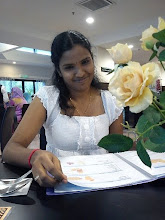1. Choose a color
This is hardest part in interior design. The most important is to find one that will create a desired mood and make you happy when you come home. It’s important to find the color is guaranteed way to find a complimentary color. Hold them up to the furniture, floors, artwork, cabinets and anything else that’s already in the room. Try to narrow it down to three or four choices.
2. Using more than one color
If you want paint the top and bottom of the walls different colors it is best to use the darker color on the bottom portion and the lighter on top. The light color will dominate and the dark color will have a grounding effect. Same goes to the ceiling paint. Painting it a shade darker will make the room feel cozier; painting it a lighter shade will create an airier feeling.
There’s a lot you can do with paint so there’s no need to do the walls all in the same color. Some fun techniques include color blocking, stenciling and color washing. You can use different colors on the same wall, or for a subtle effect you can use different finishes.
4. Choose a finish
Flat: Offers a matte finish, which is perfect for covering walls with a little wear and tear because it doesn't reflect light. Use flat finishes anywhere you want to cover imperfections.
5. Determine the Amount of Paint Needed
Add the width of all the walls in the room together and multiply the number by the height of one wall (from floor to ceiling). Take the total and subtract the total area of all the doors, windows, archways, etc. This will get you the exact area of wall space you'll need to paint. A general rule of thumb is that a flat surface usually requires one gallon for every 400 square feet. Take into account how many coats you think you'll need to do.
6. Prepare to paint
A good preparation is one of the most important painting tips and key in getting a professional looking paint job
Ø Move anything out of the room that might get in the way and remove all necessary hardware and fixtures.
Ø Wipe down the walls with a solution of water and a title bit of dish soap. This will remove dirt, dust and grease
Ø Fill any cracks with plaster filler and sand down any surfaces that will be painted. Wipe off any excess dust from the sanding with a damp cloth
Ø Make sure you have all brushes, rollers, and paint trays you will need before starting. Having to take a break in the middle of painting to run to hardware store will be frustrating and slow you down.
7. Tape off areas to be painted
It is time consuming but it’s worth it. Use painters tape to tape off the trim, ceilings, windows, doors, and any other necessary areas. It will ensure you get a nice straight line and you do not cross over onto an area you do not want paint.
8. Paint from the top down
Always start painting from the highest areas to the lowest. Start with the ceiling or top of the walls and work your way down. This way you can catch any drips and it won’t ruin a freshly painted wall.
9. Thin coats are better than trick
Do never put too much paint on the brush. It’s far more effective to put a small amount on the brush or roller and use long, even strokes to apply thin coats, several thin coats will do a better job of covering the walls than one thick coat.
10. Paint the trim last
Quite often trim can catch some of the spray that comes off of paint rollers. For this reason it is best to paint the trim last since it will be done with a brush and excess paint won’t get on the walls





No comments:
Post a Comment